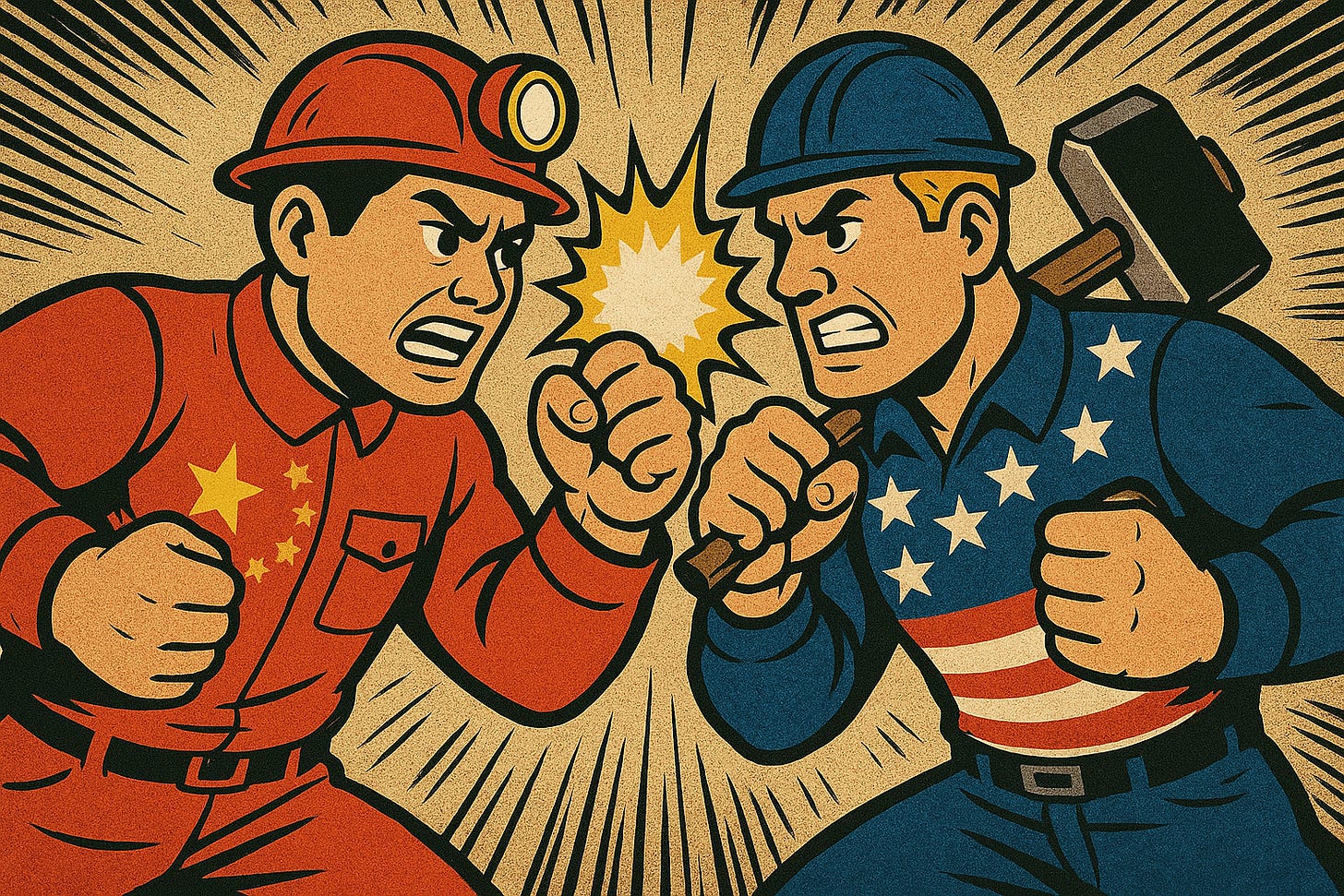U.S.–China Trade Salvos and the Rare Earth Frontline (May 31 – June 6 2025)
Mineral Warfare: How Rare Earths Are Shaping the U.S.–China Clash
China’s Rare Earth Dominance and April 2025 Export Controls
China has long commanded the rare earth elements (REE) industry, producing around 90% of the world’s rare earths and virtually all of the critical heavy rare earths needed for high-performance magnets. This dominance spans not just mining but the complex, dirty refining processes needed to turn ore into useful materials. In April 2025, Beijing moved to weaponize this dominance by imposing sweeping new export controls on REEs. China’s Ministry of Commerce announced that seven categories of medium and heavy rare earths – including samarium, gadolinium, terbium, dysprosium, lutetium, scandium, and yttrium – along with related alloys, compounds, and permanent magnets, would require special export licenses effective April 4. The official rationale cited protecting “national security” and fulfilling nonproliferation obligations, but strategically it was a direct response to new U.S. tariffs.
Keep reading with a 7-day free trial
Subscribe to Talon Black to keep reading this post and get 7 days of free access to the full post archives.



